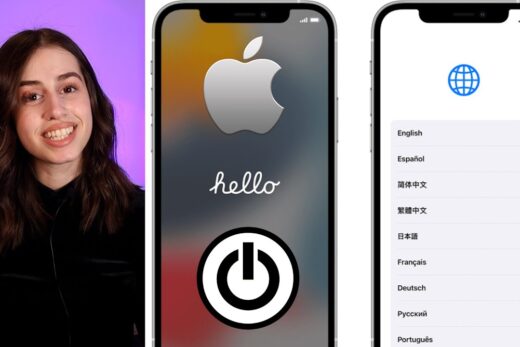Ahead of moving forward with this article, let’s make it very clear – the main purpose of this article is to help product owners choose which of the two top mobile application frameworks is suitable for their needs. Angular Vs Vue.js is a popular sbject of debate among the community of product owners, with Vue.js constantly gaining popularity and curiosity around it every day. You can consider Vue.js somewhere in between React and Angular when it’s about popularity and usability.
Here, you will get to know what to choose between Vue.js or AngularJS. We will also help you understand the potential of both platforms and compare them to determine which one matches your needs the best. This is your best guide to navigate Angular Vs Vue.js with no bias and in-depth analysis of both frameworks.
Angular Vs Vue.js: Introduction to The Frameworks
Vue.js
Vue.js is an emerging JavaScript front-end framework gaining high popularity among product owners and developers. This excellent tool offers you all the essential functionalities and components to make your application development project smooth and efficient.
Vue.js was launched as a standalone project, a single-person show by Evan You. However, it has gathered a core contributors’ team in just a few years that make this framework more worthwhile.
Angular
Angular ranks among the top-notch JavaScript framework platforms used for developing SPA (Single Page Applications). It is also admired as one of the most mature frameworks that offer the impressive backing of a vast and efficient team of contributors.
Angular is considered a “platform” as it offers you full-stack solutions to match various mobile application development requirements.
Angular Vs Vue.js: How Does It Work?
How does Vue.js work?
Vue.js focused on the “View” parameter of your app development project. The MVVM architecture pattern inspires this efficient framework.
Vue.js links the view part and DOM part with the view instance and Model-view part. To bind these two portions, the framework uses a data binding system. The data available in your view instance is known as the Model part. It provides your app with the data it requires.
How does Angular work?
Angular is considered a comprehensive front-end JavaScript platform as it offers you a full-stack solution for app development needs. Google supports and backs this framework and makes it a more reliable choice.
Angular is commonly known as a more systematic and structured front-end framework than various frameworks available in the market. However, to leverage this extensive framework for its recognized benefits, some complexities are also present in its functioning.
This framework functions on the MVC structure and comprises several significant functions and components to build full-stack mobile applications.
In Angular, the implementation of the MVC pattern is in JavaScript and HTML. The model and controller are defined in JavaScript, and the view is implemented in JavaScript.
Popularity
According to the latest report of NPMTrends, both frameworks have shown similar rise and fall trends of popularity over the past few years. Even if observed based on weekly downloads, only a marginal difference was there between Vue.js and Angular.
Angular has a weekly download of approx 1.94 million, and Vue.js has 1.8 million weekly downloads. Both of them are big numbers to prove their worth of comparison for being the best choice for you as a front-end JavaScript framework.
Data Binding
Vue.js comprises a v-model for two-way data binding, which helps product owners tackle one of the trickiest phases of building an application – user input synchronization. Vue.js updates the templates according to model changes and updates the data model whenever the changes occur in templates.
This framework makes use of two-way data binding with v-model directives and also supports one-way binding using a :value=syntax.
AngularJS are more flexible when it’s about data binding – Angular uses one-way and two-way data binding. There are several methods of data binding in Angular, such as:
- Property Binding: This feature allows you to bind the template expression view. Property binding is all about updating the value of a definite variable in the component and showing it in view. This mechanical process again helps modify the value only at the component level.
- String Interpolation: You can hire Angular developers to use the string interpolation. Generally, the text within the braces is the identity of the component property and Angular swaps this identity with a string of the value of the same corresponding component property. This process is helpful whenever you need to modify the value but only at the component level.
- Two-way Data binding: Angular makes use of two-way data binding by making a combination of both Event and Property binding. It’s an entirely continuous data synchronization based on Angular’s ngModel directives from component to view and view to the component.
Integration
Vue.js offers you a pretty simple integration process. There is no requirement for other tools to work as this process relies only on JavaScript. You also get the choice of writing templates in languages you wish from HTML, JSX or JS.
Angular also offers you impressive integration capabilities with other JS libraries and third-party elements.
Level of Complexity
Vue is relatively easier to manage at the API and design level than Angular. You can even hire top Angular developers who have a basic understanding of HTML, CSS, and JavaScript. It will be easy for them to build a Single Page App in less than 24 hours with Vue.js.
Undoubtedly, Angular is more complicated than Vue at the API and design level. You will have to spend a gruesome time understanding the core concepts of Angular docs. But, after understanding these concepts completely, it becomes fairly easy to use Angular to build an application.
Wrapping Up
This was a thorough comparison between the two most famous Javascript frameworks – Angular vs Vue.js. As you can see, in most instances, both the frameworks are quite similar to each other in their way of functioning and code structure too. Both these extensive technologies will bring various benefits to the table. So, we can conclude this comparison as:
When to use Angular for your project needs:
- For enterprise web applications development
- To develop applications that require dynamic content.
- To build progressive web applications.
When to use Vue.js for your project needs:
- To create an application full of interactive elements and animations.
- When your goal is to provide seamless integration with multiple applications.
- To ship your MVP quickly.
- When you want to prototype but don’t have advanced skills.




























